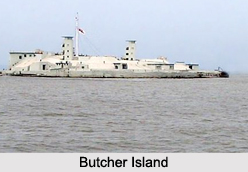 The state of Maharashtra is situated in the western part of India. It has the distinction of being the third-largest and the second-most populous state of India. The geographical terrain of this state is characterized by major rivers, palm-fringed beaches and mountains. Geographical feature called islands also form a part of Maharashtra. They have not only beautified this state, but also serve various other purposes.
The state of Maharashtra is situated in the western part of India. It has the distinction of being the third-largest and the second-most populous state of India. The geographical terrain of this state is characterized by major rivers, palm-fringed beaches and mountains. Geographical feature called islands also form a part of Maharashtra. They have not only beautified this state, but also serve various other purposes.
Salsette Island
Salsette Island is one of the most densely populated islands in the world as the metropolis of Mumbai and the cities of Thane and Mira-Bhayandar lie on it. This island is spread over an area of about 619 square kilometers, which is occupied by 15.1 million inhabitants.
Panju Island
Panju Island is located in Vasai Creek, north of Mumbai. Characteristically, it is an estuarine island which is used by the western railway to connect the island of Salsette with the mainland at Vasai. This island occupies an area of about 600 acres and serves as a home to Aagri community.
Butcher Island
Butcher Island, also known as Jawahar Dweep is an island off the coast of Mumbai. Butcher Island functions as an oil terminal. This island has crude oil tanks and a small dock where the oil tankers from Gulf countries are docked to unload crude oil.
Mazagaon Island
Mazagaon Island is a part of South Mumbai. Various communities reside in Mazagaon. This island is a hub of maritime companies.
Oyster Rock
Oyster Rock is an island located in the Mumbai Harbour. The Indian Navy possesses this island. Oyster Rock is known to be heavily fortified.
Yeshwantgad
Yeshwantgad is a fortified island off the coast of Maharashtra in the district of Ratnagiri. It was constructed on Rajapur creek with the sea on one side.
Underi
Underi is a fortified island located in the district of Raigad. Underi Island along with Island of Khanderi served as one of the landmarks for ships entering Mumbai Harbour. It was constructed in 1680 CE by Kahim of the Siddis and is owned by the Government of India. Comparatively, Underi is smaller than Khanderi.
Khanderi
Khanderi or Khanderi Sea Island is an island with a fort surmounted on it. It is located south of Mumbai. This island was constructed in 1660 by Shivaji.
Other Islands of Maharashtra
Some of the other Islands of Maharashtra are Old Woman`s Island, Marve Island, Hog Island and Sinoy Hill.















